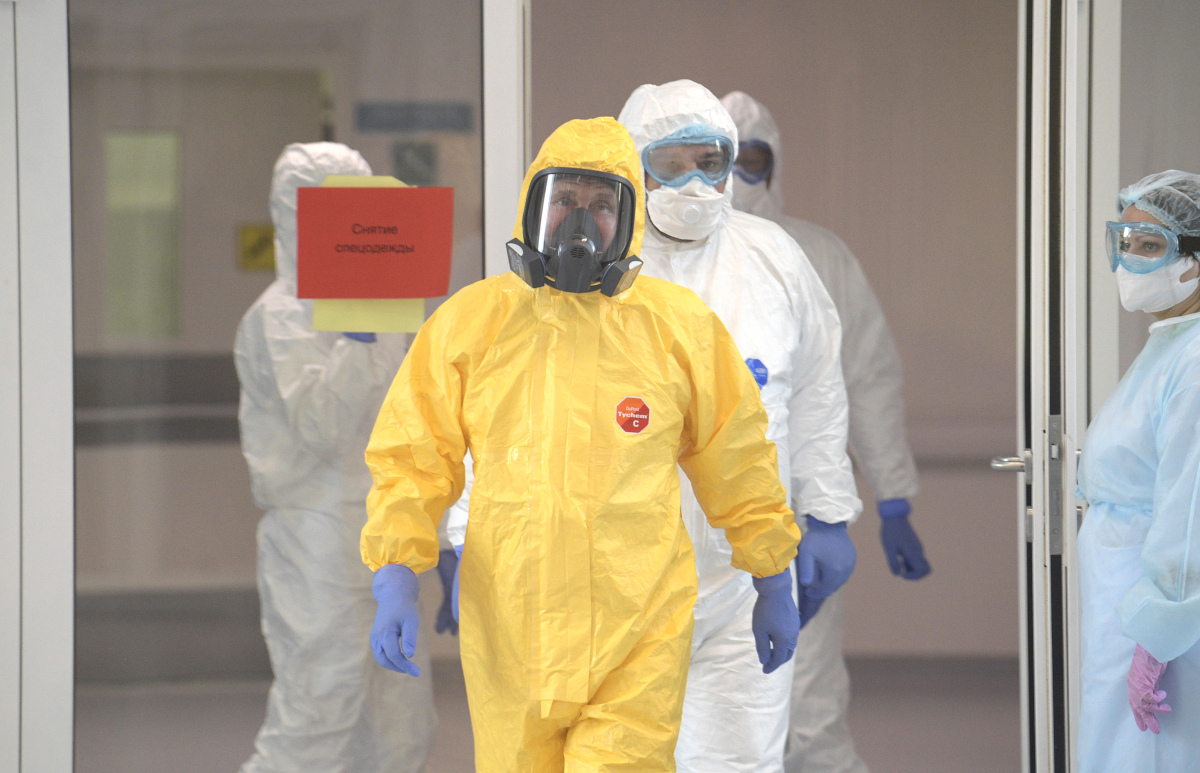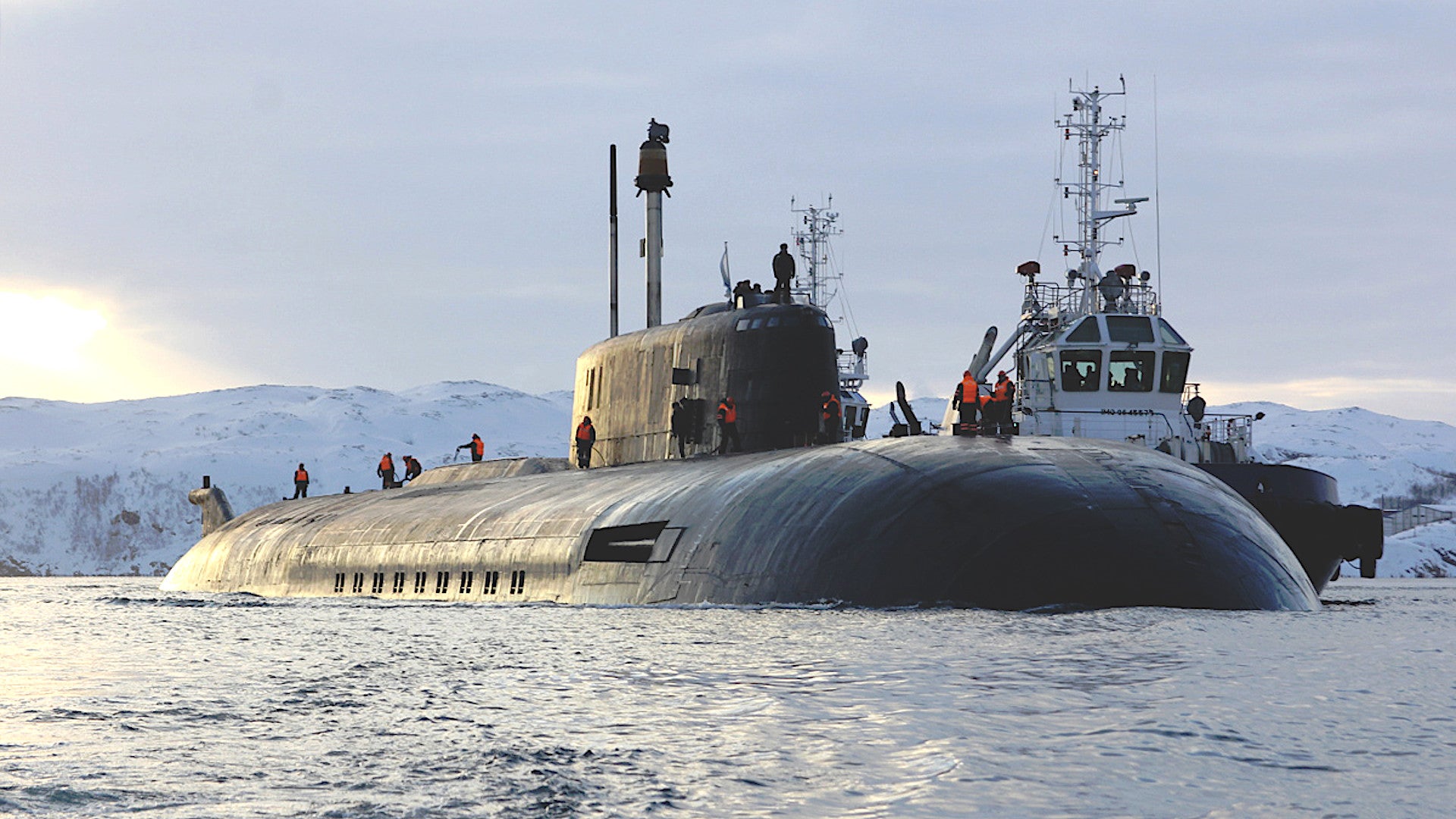The entire crew of one of the Russian Navy’s eight Project 949A Oscar II class guided missile submarines is reportedly in quarantine over concerns they may have been exposed to the COVID-19 novel coronavirus. This underscores the very serious implications that the rapidly expanding pandemic is almost certain to have on the readiness of military forces around the world, including the U.S. military, as time goes on, something the War Zone has already explored in detail.
B-port, an online Russian news outlet based in the northern port city of Murmansk, was first to report that the crew of the Oscar II class submarine Orel was in quarantine on Mar. 26, 2020. Russian Navy officials made this decision after learning that a civilian contractor who had visited the boat on official business had come into contact with another individual who tested positive for COVID-19.
Orel is homeported at the Guba Bolshaya Lopatka submarine base, which is part of the larger Zapadnaya Litsa naval base, on the Kola Peninsula. The base is situated to the northwest of Murmansk, as well as Severomorsk, a closed city that serves as the headquarters for the Russian Navy’s entire Northern Fleet.
It’s unclear how many Russian Navy personnel, as well as other individuals who work at Guba Bolshaya Lopatka, are in quarantine now, but a Project 949A submarine has a typical crew compliment of 110. B-port also reported that personnel from a second, unnamed submarine and floating workshop moored close to Orel had been placed in insolation for fear that they may also have been exposed to COVID-19.

Orel is one of eight remaining Soviet-era Oscar II class submarines still in Russian Navy service, two of which are in the process of being upgraded to the improved Project 949AM standard. A ninth boat in the class, the Belgorod, is in the final stages of major conversion into a Project 09852 special projects submarine, which you can read about in more detail in this past War Zone piece.
A present, Orel is one of just three Oscar IIs active with the Northern Fleet, the other two being the Voronezh and the Smolensk. The Tver, Omsk, and Tomsk are all assigned to the Russian Navy’s Pacific Fleet.
The Oscar IIs, which began entering Soviet Navy service in the 1980s, still form the core of the Russian Navy’s guided-missile submarine force. They have a distinctive wide-bodied hullform with long compartments on either side between the boat’s inner and outer hulls. Each one of these two compartments contains launchers for 12 massive P-700 Granit anti-ship cruise missiles, also known to NATO as the SS-N-19 Shipwreck. The boats also have four 533mm torpedo tubes that can fire both heavyweight torpedos and the unique RPK-6 Vodopad anti-submarine missile, or SS-N-16 Stallion, the latter of which you can read about more in this past War Zone story.

The improved Project 949AM submarines will feature a new launch system that is capable of firing more modern missiles, including the P-800 Oniks supersonic anti-ship cruise missile and variants of the Kalibr land attack cruise missile. The new launchers will also reportedly be able to fire the shadowy 3M22 Zircon hypersonic cruise missile.
For the moment, though, one-sixth of the Russian Navy’s Oscar II fleet is sidelined due to an invisible enemy, COVID-19, which raises questions about how the virus might impact the service’s future operations, across the board, in the coming weeks and months. If the virus were to spread to the crews of Russia’s ballistic missile submarines, it could severely limit the country’s second strike nuclear deterrent capabilities. The War Zone has already explored these issues with regards to the U.S. Navy and the same basic factors apply to Russia’s naval forces.
Sailors on board ships and submarines work and live in very confined environments and COVID-19 has already demonstrated its ability to spread rapidly, in general. The U.S. Navy is already dealing with cases on a number of ships, most notably two Nimitz class aircraft carriers deployed in the Pacific region. This is likely to become an issue for navies around the globe.
On Mar. 30, the Dutch Ministry of Defense announced that the country’s Walrus class attack submarine HNLMS Dolfijn, one of just four in service, was returning to port two weeks early after eight members of its crew tested positive for COVID-19. At least 15 sailors on the boat have displayed symptoms. The crew will be placed in quarantine after returning to the Netherlands.

With regards to Russia’s military, Krasnaya Zvezda, the official newspaper of the Russian Ministry of Defense, claimed on Mar. 30 that medical personnel had tested more than 3,700 individuals across the armed services for COVID-19, all of which had come back negative. However, its unclear how accurate this reporting is and, even if it is, the situation seems likely to change in the near future. Kremlin officials, including Russian President Vladimir Putin, had been downplaying concerns about the virus only to see a spike in confirmed cases across the country in the past week.
Just in the past 24 hours, the Russian Coronavirus Response Center reported another 302 cases, bringing the nationwide total to 1,836. Moscow has now declared a total lockdown, but reports indicate that authorities may be having difficulty enforcing it.

Whether the quarantining of Orel‘s crew, as well as that of the second submarine and the personnel from the floating workship, at the Guba Bolshaya Lopatka submarine base, helps prevent an outbreak from occurring there remains to be seen. Whatever happens in the Murmansk region, COVID-19 is clearly becoming a larger threat to readiness of navies around the globe.
Contact the author: joe@thedrive.com
